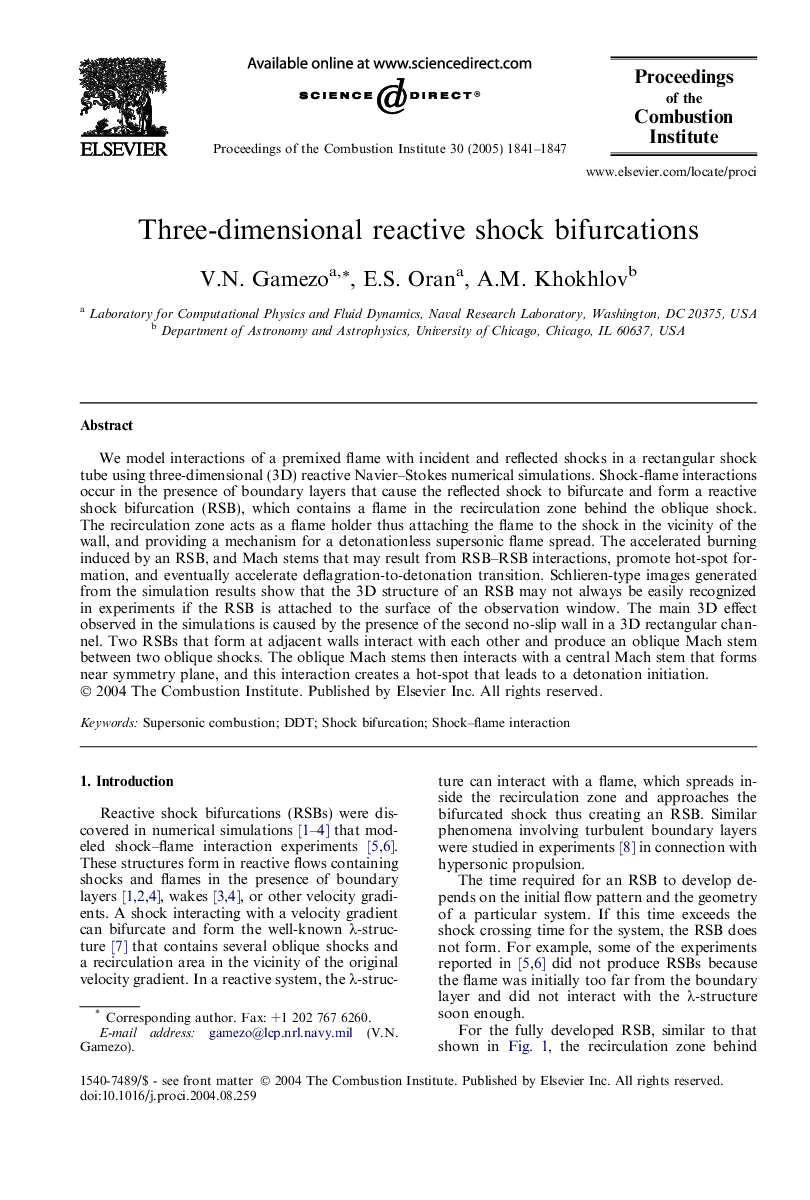| Article ID | Journal | Published Year | Pages | File Type |
|---|---|---|---|---|
| 240924 | Proceedings of the Combustion Institute | 2005 | 7 Pages |
We model interactions of a premixed flame with incident and reflected shocks in a rectangular shock tube using three-dimensional (3D) reactive Navier–Stokes numerical simulations. Shock-flame interactions occur in the presence of boundary layers that cause the reflected shock to bifurcate and form a reactive shock bifurcation (RSB), which contains a flame in the recirculation zone behind the oblique shock. The recirculation zone acts as a flame holder thus attaching the flame to the shock in the vicinity of the wall, and providing a mechanism for a detonationless supersonic flame spread. The accelerated burning induced by an RSB, and Mach stems that may result from RSB–RSB interactions, promote hot-spot formation, and eventually accelerate deflagration-to-detonation transition. Schlieren-type images generated from the simulation results show that the 3D structure of an RSB may not always be easily recognized in experiments if the RSB is attached to the surface of the observation window. The main 3D effect observed in the simulations is caused by the presence of the second no-slip wall in a 3D rectangular channel. Two RSBs that form at adjacent walls interact with each other and produce an oblique Mach stem between two oblique shocks. The oblique Mach stems then interacts with a central Mach stem that forms near symmetry plane, and this interaction creates a hot-spot that leads to a detonation initiation.
